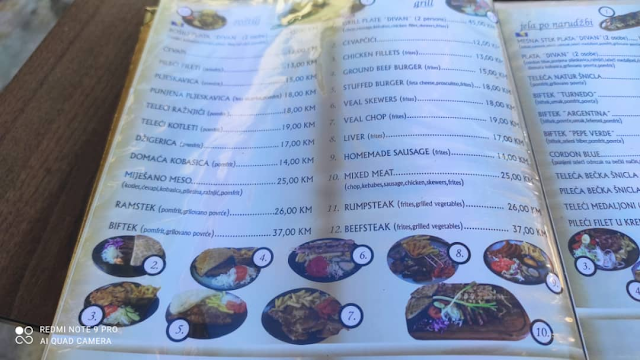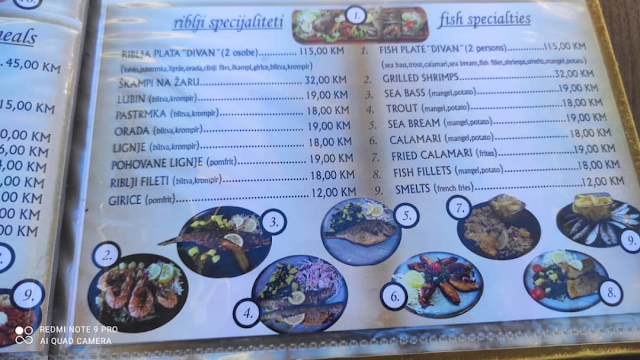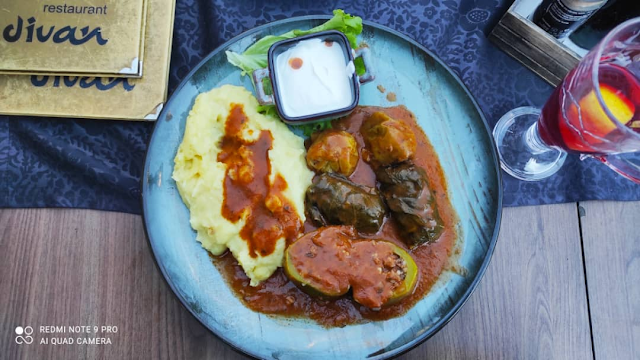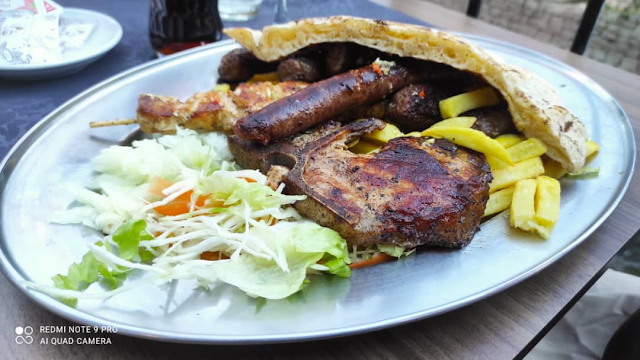salam Tuan,
Kod E471 dlm label kod snack je nama apollo malaysia tu halal ke…. boleh jelaskan..
Comment on List of Non Halal by rem
Comment on List of Non Halal by Dr Mamot Bin Said
Wasm,
E471 adalah Mono- and diglycerides of fatty acids (glyceryl monostearate, glyceryl distearate), iaitu sejenis pengemulsi (emulsifier). Disediakan melalui tindak balas glycerolysis antara glycerol (produk hidrolisis lemak/minyak) dengan minyak dan lemak. Di Malaysia sumber lemak/minyak adalah minyak sawit, justeru E471 adalah berasaskan sawit – maka ia halal.
Comment on List of Non Halal by raizal
betul ke produk penjagaan kulit garnier xhalal?
Comment on Mengapa produk halal, selalunya mahal? Kongsikan pandangan anda by siti
salam. saya ingin mengutarakan pendapat. produk yang halal di malaysia dikatakan mahal,berkemunkingan juga seperti saudara-saudari telah perkatakan disini,dimana : Kos pemasaran & Kos Bahan.
Mungkin Ada setengahnya mengatakan tidak salah untuk membeli barang yang mahal,asalkan halal.ye itu betul. Namun jika kita lihat pada taraf sara hidup,dan ekonomi ( maaf ye sy bukan pakar ekonomi,mungkin ayat saya tunggang-langgang ), rakyat kita yg betul2 prihatin isu halal ini kebanyakkan nya dari golongan pertengahan dan bawahan. dimana gaji mereka adalah rendah/kecil. Bohonglah andainya anda sanggup membeli sekilo tepung yg berharga RM 5 berbanding yg biasanya ada dipasaran,dgn gaji anda yg rendah itu. kemungkinan jua,produk halal kita dicaj dgn kadar cukai yang tinggi oleh kerajaan. seperti yang kita ketahui, malaysia diantara negara yang mengenakan cukai yang tinggi.
cadangan saya :Mungkin kerajaan patut kaji kadar cukai untuk produk khas berstatus halal lagi tulen ni. Dan Perbanyakkan lagi kedai yg jual barang2 yg betul2 halal…rakyat peka isu halal,kemungkinan kerajaan harus membantu rakyat,mungkin dgn pelbagai cara yang meyakinkan.
wassalam
Comment on List of Non Halal by keliru??
assalamualaikum..
saya telah menerima hamper dari famous amous dan di dalam nye trdapat sebotol sparkling juice yg dinyatakan tanpa alchohol dan mempunyai cop halal dari australia.
ade sesetengah pihak mengatakan ianya boleh diminum tp ade pihak lain yg pernah merasa meminum arak/wine mengatakan ianya tidak boleh diminum kerana ia berbuah dan masam seperti wine.
jd sye benar2 keliru.boleh atau tidak sparkling juice itu diminum?
Comment on List of Non Halal by melur
di perkarangan masjid Taman Mahkota Aman Kuantan ada satu kedai yang menjual keju confirm halal.Contanct me for more info.
Comment on Sumbang Artikel Di Sini by Cakap Niaga (@cakapniaga)
Acar Enterprise – 0126725610: Produk Makanan Halal Buatan Malaysia Di Selangor: Lemang, Lontong, Ketupat, Rendang Tok, Serunding, Acar Buah, Sagon, Dodol, Wajik, Sos Rojak
Artikel Penuh: http://goo.gl/ppuy1
Comment on Sumbang Artikel Di Sini by Cakap Niaga (@cakapniaga)
RM20/Dewasa & RM10/4-12 Tahun: Steamboat dan BBQ sepuas hati di Kuang, Selangor, Malaysia. SELAMAT DATANG KE KAFE D’MANGGIS@CAFE D’MANGGIS
Artikel Penuh: http://goo.gl/vr8qW
Comment on List of Non Halal by fasya
apakah produk ligo raisin itu halal dan selamat utk dimakan?
Comment on List of Non Halal by Dr Mamot Bin Said
ASM,
Kenapa pula tidak sebab ia adalah buah anggor kering!
Comment on List of Non Halal by Bie_Penang
Salam,
Saya ingin mengajukan soalan ini untuk pihak JAKIM.
Adakah semua produk makanan & minuman yg disiarkan melalui iklan tv adalah halal dari segi syarak.
Comment on Dedikasi by Rezza
Assamualaikum ustaz, saya nk tanya betul ke minuman cafe 3 in 1 tak halal??boleh ustaz tlg perjelaskan dgn saya…saya nk kepastian…yang mana 1 cafe 3 in 1 yang tak halal di pasaran???
Comment on List of Non Halal by siti
agaknya MON ni orgnya kurang pengetahuan tentang adab… mgkn u banyak pengetahuan bab2 halal-haram ni tapi jahil dalam bab adab..
Comment on List of Non Halal by Dr Mamot Bin Said
Wasm,
Pendapat peribadi saya kalau dah ada tanda tanda halal walaupun bukan dari Malaysia, kenapa pula perlu diragukan. Sebagai negara pengeluar, sudah tentu mereka lebih arif. tentang rasa masam tu memanglah sebab dalam anggor ada asid tartarik (tartaric acid). Dalam buah limau ada asid sitrik (citric acid) dan epal ada asid malik (malic acid). Kesemuanya asid buah (fruit acids). Yang tak boleh kalau ada alkohol yang sengaja dihasilkan seperti dalam pembuatan wain. Mengikut JAKIM sekiranya minuman itu mengandungi sedikit alkohol, maka ia dima fkan sebab agak sukar untuk mengelakkan fermentasi beralkohol (alcoholic fermentation) berlaku dalam produk yang kaya gula seperti perahan anggor. Dengan adanya pencemaran yis (yeast) daripada persekitaran (udara, tanah, kotak, tangan pekerja, lebah, lalat buah) fermentasi spontan (spontaneous fermentation) boleh berlaku lalu membentuk alkohol.
Sekian dimaklumkan.
Wassalam.
Comment on List of Non Halal by Dr Mamot Bin Said
Cuma nak tambah sedikit lagi. Rasa masa juga disumbangkan oleh asid fenolic (phenoilc acids) seperti ferulic acid, caffeic acid yang memang terdapat terutama di kulit buah anggor tersebut. Ia baik untuk kesihatan kerana merupakan bahan antioksidan yang kuat.
Sekian.
Comment on List of Non Halal by keliru??
terima kasih dr. penerangan yg diberikan amat lengkap:)
Comment on List of Non Halal by Moel
Jd untuk Apollo Pandan Layer cake yg tertera E471 da E475 menurut pendapat Dr. Mamot halal ke haram? Mohon jawaban dikirim ke moelcybers2003@gmail.com
Comment on List of Non Halal by noor aimie
Teruskan usaha Dr…saya kagum kerana Dr sama2 berjuang berdakwah atas pengetahuan dan kepakaran yg Dr ada demi kepntngn umat Islam di Malaysia…
Comment on List of Non Halal by noor aimie
Produk
BLACK CHECKER COCOA FLAVOUR LAYER CAKE
BRAND: APOLLO
-APOLLO FOOD INDUSTRIES (M) SDN. BHD.
STATUS HALAL : Sijil Sah
Tarikh Tamat
15/04/2013
Syarikat
APOLLO FOOD INDUSTRIES (M) SDN. BHD.
Comment on List of Non Halal by noor aimie
(Sekadar berkongsi…)
Which E-numbers and additives are from animal origin ?
In this document we list which E-numbers may be derived from animal origin. In many cases the origin of the product may be either from animal or non-animal sources. This is especially the case for those additives that contain fatty acids. These are normally of plant origin, but animal origin cannot be excluded. As the products are chemically identical, only the produces can give information on the exact origin.
Each religious (Muslim, Jew, Hindu or other) or other group (vegetarians, vegans) can use the list below to determine whether or not to accept the additive.
E-number Name Origin
E120
Carmine, Cochineal Colour isolated from the insects Coccus cacti
E322
Lecithine Soy beans and for some purposes from chicken eggs.
430
Polyoxyethylene(8) stearate Stearic acid is a fatty acid. See note below this table.
E431
Polyoxyethylene (40) stearate Stearic acid is a fatty acid. See note below this table.
E432
Polyoxyethylene-20-sorbitan monolaurate Lauric acid is a fatty acid. See note below this table.
E433
Polyoxyethylene-20-sorbitan mono-oleate Oleic acid is a fatty acid. See note below this table.
E434
Polyoxyethylene-20-sorbitan monopalmitate Palmitic acid is a fatty acid. See note below this table.
E435
Polyoxyethylene-20-sorbitan monostearate Stearic acid is a fatty acid. See note below this table.
E436
Polyoxyethylene-20-sorbitan tristearate Stearic acid is a fatty acid. See note below this table.
441 (invalid)
Gelatin From animal bones. Since the BSE crisis mainly from pork, but other animal bones are used. Halal gelatin is available in specialised shops.
E470
Fatty acid salts For fatty acids, see note below this table.
E471
Mono- and di-glycerides of fatty acids For fatty acids, see note below this table.
E472
Esters of mono- and diglycerides For fatty acids, see note below this table.
E473
Sugar esters of fatty acids For fatty acids, see note below this table.
E474
Sugarglycerides Combination of sugar and fatty acids. For fatty acids, see note below this table.
E475
Polyglycerol esters of fatty acids For fatty acids, see note below this table.
E477
Propyleneglycol esters of fatty acids For fatty acids, see note below this table.
478
Mixture of glycerol- and propyleneglycol esters of lactic acid and fatty acids For fatty acids, see note below this table.
E479 and 479b
Esterified soy oil For fatty acids, see note below this table.
E481/2
Natrium/Calcium-stearoyllactylate Mixture of lactic acid and stearic acid, a fatty acid. For fatty acids, see note below this table.
E483
Stearyltartrate Mixture of tartaric acid and stearic acid, a fatty acid. For fatty acids, see note below this table.
484
Stearylcitrate Mixture of citric acid and stearic acid, a fatty acid. For fatty acids, see note below this table.
E485
(invalid number) Gelatine From animal bones. Since the BSE crisis mainly from pork, but other animal bones are used. Halal gelatin is available in specialised shops.
E491-5
Combinations of sorbitol and fatty acids For fatty acids, see note below this table.
542
Edible bone phosphate From animal bones. Since the BSE crisis mainly from pork, but other animal bones are used.
E570-73
Stearic acid and stearates Stearic acid is a fatty acid. See note below this table.
E626-29
Guanylic acid and guanylatens Mainly from yeast, also from sardines and meat.
E630-35
Inosinic acid and inosinates Mainly from meat and fish, also made with bacteria.
636, 637
Maltol and Isomaltol From malt (barley), sometimes also from heating milk sugar.
E640
Glycin Mainly from gelatine (see 441 above), also synthetically.
E901
Bees wax Made by bees, but does not contain insects.
E904
Shellac Natural polymer derived from certain species of lice from India. Insects get trapped in the resin.
913
Lanolin A wax from sheep. It is excreted by the skin of the sheep and extracted from the wool.
920-21
Cystein en cystin Derived from proteins, including animal protein and hair.
E966
Lactitol Made from milk sugar
1000
Cholic acid From beef (bile)
E1105
Lysozym From chicken eggs
Fatty acids
Fats, whether from plant or animal origin, consist of glycerol and generally 3 fatty acids. Fats can enzymatically be split in fatty acids and glycerol. The fatty acids can be purified and reconnected to glycerol as mono- di- of triglycerides (glycerol with 1, 2 or 3 fatty acids respectively). Many additives consist of these semi-natural fats, which act as emulsifiers.
These semi-natural fats are degraded and metabolise din the body, just like normal fat.
Chemically the fatty acids from animal or plant origin are identical. Therefore the origin is of no importance for the function in the food. Producers thus normally choose the cheapest oils to make these fats. This is generally some vegetable oil. However, animal fats can not be excluded.
Unfortunately it is not possible to distinguish animal and vegetable fatty acids in the final product. Only the producer can provide information on the origin. As there is a risk for animal fats, Jews, Muslims, Hindus and vegans should avoid these products, unless the origin is mentioned by the producer.
Other common ingredients of animal origin :
Casein and caseinate A protein from cow’s milk
Gelatin From animal bones. Since the BSE crisis mainly from pork, but other animal bones are used. Halal and kosher gelatin is available in specialised shops.
Lactose Sugar from cow’s milk
Omega-3-fatty acids From fish, seals and soy.
Whey and wheypowder A fraction of milk, see also here.
(Whey, wheypowder and cheese may not be halal when the animal that provided the rennet to clot the milk, is not slaughtered according to Islamic rules. Only the producer can provide the information on the status of these products.)
Overview of additives and ingredients that are often mentioned as being from animal origin:
E101
Riboflavin (lactoflavin) Yellow food colour. It can be isolated from milk, but commercially produced from micro-organisms. Isolation from milk is too expensive.
E153
Carbon Prepared from charcoal from burned wood. Can be obtained from burned animals, but this is no longer done.
E161g
Canthaxanthin Colour prepared from mushrooms or synthetically from carotene. Historically it was also prepared from shrimp waste or flaming feathers. Synthetic cantaxanthin is cheaper and has higher purity.
E270
Lactic acid and lactates Made by bacterial fermentation on sugar waste (molasses). It is not present in milk. All fermented products (dairy and non-dairy) contain lactic acid as the result of bacterial fermentation. Commercially only prepared from sugar.
E306, 307, 308
Tocopherols (vitamin E) From vegetable oils. Also in animal (fish) oils but these oils are too expensive. Fish oils are, however, used as a source in food supplements, but not in foods, due to the strong flavour.
E325-7
Lactates See E270 above.
375
Nicotinic acid (vitamin B3) From yeast. Production from liver is too expensive.
E422
Glycerol Part of animal and vegetable fat. Commercially made synthetically from petroleum.
E476
Polyglycerolpolyricinoleate Synthetic vegetable fat.
E620-5
Glutamates. Commercially only made from sugar by bacterial fermentation or from seaweed. Theoretically from any protein, but that is too expensive.
E927b
Ureum Synthetic. Can be isolated from urine, but too complicated and expensive.
- Vitamin B12 Commercially only made by bacterial fermentation. Isolation from meat is too expensive, due to the very low concentrations.









